



CHROMATIN by: Medina Dugger x François Beaurain
Pigment print on Hahnemuehle cotton rag + ANIMATED NFT
Series of 5 + 2 AP
PROJECT DESCRIPTION BELOW




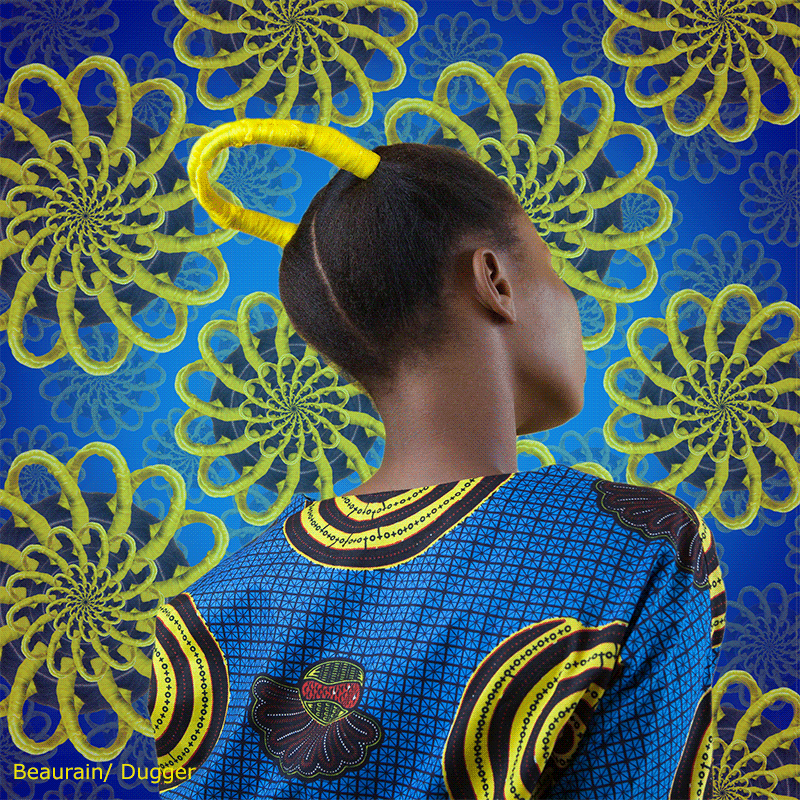
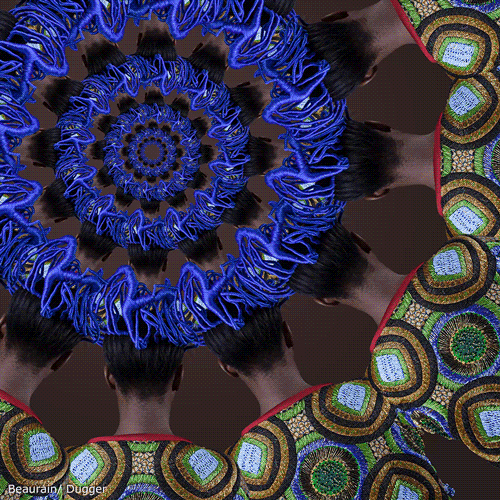

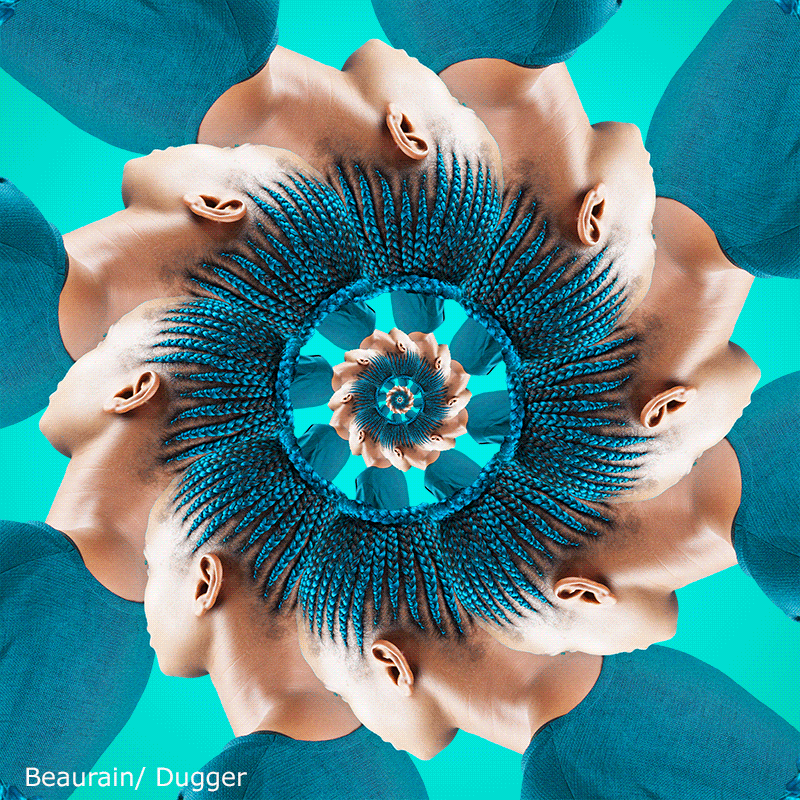

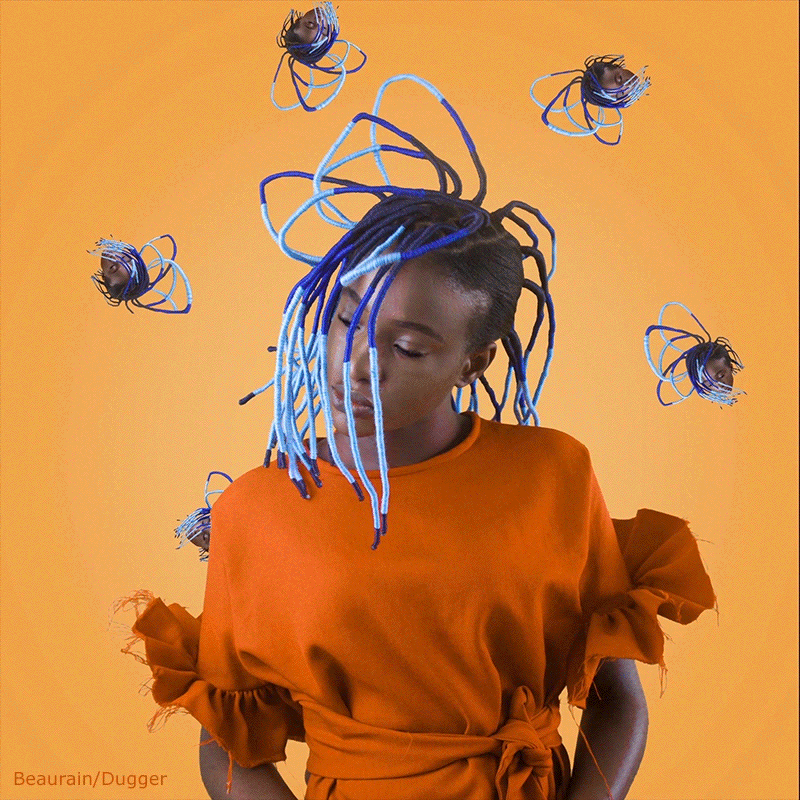
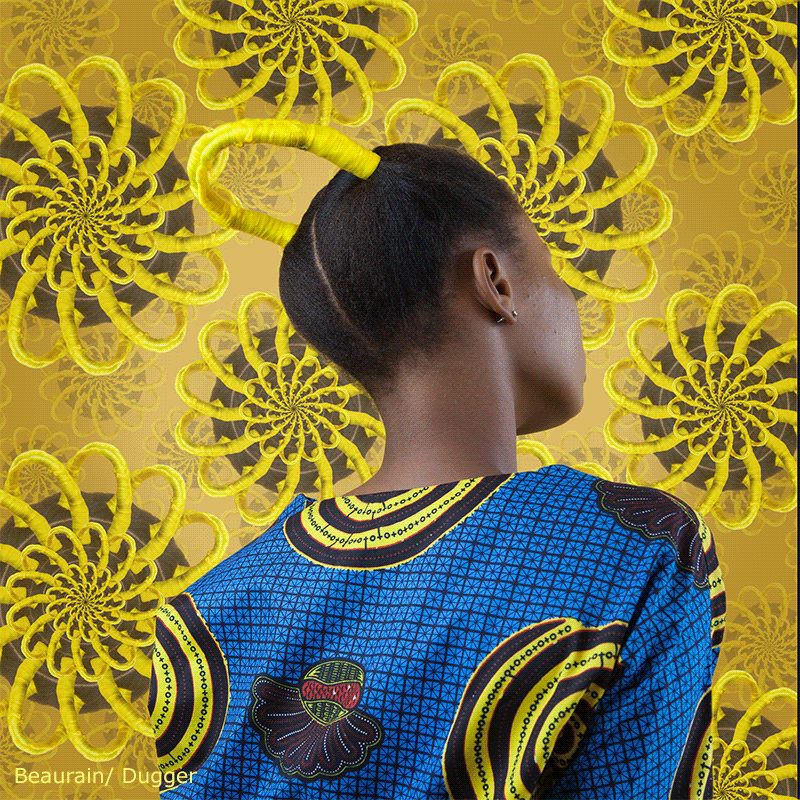

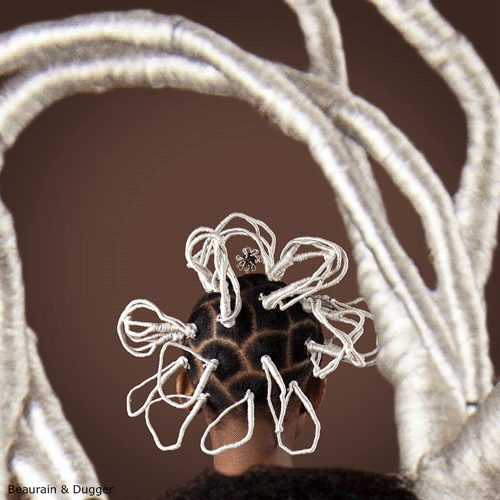
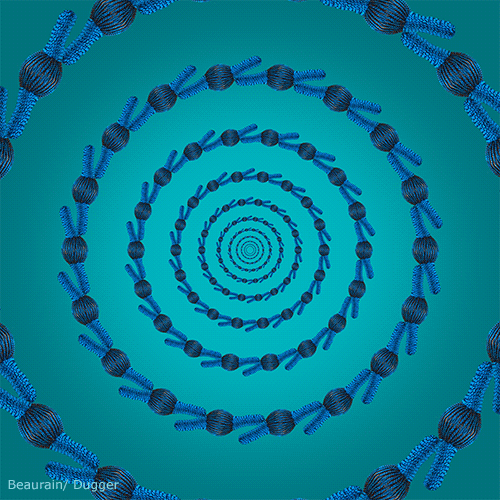
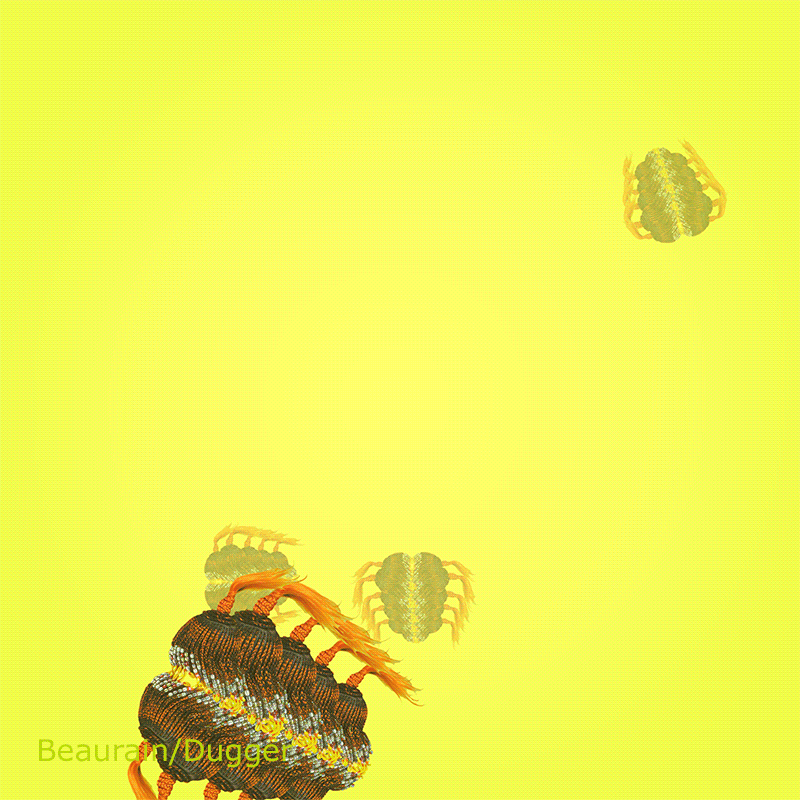

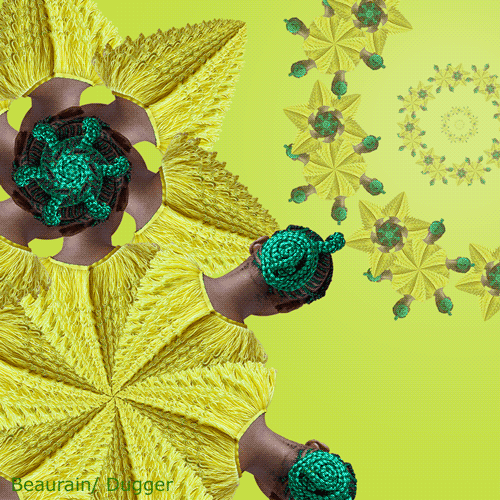

CHROMATIN
By Medina Dugger & François Beaurain
Chromatin is the animated fractal evolution of Medina Dugger’s CHROMA series, created in collaboration with French-Moroccan artist François Beaurain. This series delves into the intersection of sacred geometry, digital innovation, and ancestral traditions, illuminating the profound mathematical and cultural significance of Nigerian hairstyles. At its core, Chromatin examines the fractal geometry embedded in West African hair braiding traditions—a visual language of recursive patterns where the small mirrors the large, and the individual reflects the collective. These designs echo the same geometric principles that have historically shaped West African villages, agricultural layouts, textiles, and ceremonial art forms. Fractals, often misunderstood as a recent mathematical discovery, have been an integral part of African spatial design for millennia, from the urban planning of ancient Egyptian cities to the circular villages of Sub-Saharan communities. In pre-colonial African societies, these self-replicating patterns were not merely decorative—they were expressions of indigenous technology, cosmic order, sustainability, and harmony with natural cycles.As seen in the branching of rivers, the veins of leaves, and the spiraling patterns of seashells, fractals are nature’s blueprint for growth, resilience, and interconnectedness.
Through animated, digital imagery, Beaurain and Dugger expand on this tradition, capturing the infinite dynamism of fractal patterns found in braids, twists, and cornrows. In a world where centuries of colonization and cultural erasure have nearly obliterated many African traditions, hair braiding remains one of the last surviving fractal cultural practices. Chromatin becomes not only a celebration of this legacy but also a digital preservation and transformation of it. The animations act as a ‘mise en abyme’—a visual experience where each pattern folds into itself, endlessly repeating and evolving, much like the fractals they represent.
By leveraging blockchain technology and NFT art formats, Dugger and Beaurain ensure these designs are preserved as one-of-a-kind digital assets—modern artifacts bridging ancestral wisdom and contemporary technology. These NFTs stand as immutable digital totems, representing not just hair artistry but also the profound mathematical and cultural intelligence embedded within African traditions. Chromatin is both a digital tapestry and a living archive, inviting viewers into an immersive exploration of infinity, heritage, and the geometry of existence—a visual and intellectual continuum stretching from ancient African wisdom to the forefront of digital art.
unVeiled by: Medina Dugger x Bubu Ogisi

unVeiled
unVeiled features a performance video created by Medina Dugger and creative director Bubu Ogisi. The performance positions a woman on the streets of Lagos Island, removing her chador head covering, only to reveal another one of another color its place. In Lagos, Muslim women often choose bold, bright colours and patterns, illustrating the influence of Nigerian style on the tradition and revealing the garment’s contribution to identity and self-expression. The performance, played on-loop, presents an infinite, un-ending stream of removal and replacement. It reflects on the age-old practice of veiling and the controversial, symbolic perceptions and realities associated with the women who wear them such as: religion, tradition, identity, freedom, emancipation, social conditioning, marginalisation, prejudice, acceptance, isolation and kinship, underlying a woman’s decision to veil or unveil and ultimately supporting her freedom of choice.
unVeiled was exhibited at the Kunstgewerbemuseum (Museum of Decorative Arts), Berlin and the Art Summit Nigeria, 2019.
